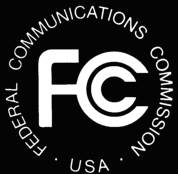Shortly after the 1941 NARBA treaty was signed, the FCC turned toward the issue of providing reliable nighttime radio service to the country's "white areas." Oldradio summarized this impending shitstorm as follows:
The "white area" problem is that by definition these areas contain a low population density over a large area. What little they had was largely a wash of competing radio splatter and at night it usually got worse. Nonetheless this is what they chose to double down on. Their rationalization was that low population densities can't support the ad revenues necessary to run a radio station.Now today that seems pretty ridiculous. There is nary a county in the US without a radio station in or very near to it. Now many of these may be automated, but that's also the case with major metros."Attempts to build a record on the white area issue surfaced as early as an October 1936 FCC hearing, but it was on Feb. 20, 1945, that the FCC officially opened Docket 6741, looking into the future of clear channel broadcasting.Thus began a struggle that was to last 35 years and put a lot of consultants’ and attorneys’ kids through college."
My point is that they were hawkish on clear channel licenses as a "solution." The circular logic in some ways seems to indicate that this was their goal all along. This was not the 1930s. This was 1945. FM radio was growing, and non-commercial radio was on the rise. It's clear to me that the "problem" was back-engineered from it's solution. You can read the docket here. On page 5 they defined the problem as they saw it
"More than half the total land area of the United States and perhaps as many as 25 million people principally in Northern New England, the more mountainous regions of the Middle Atlantic States, much of the South, the northernmost part of the Great Lakes Area, withing the Great Plains, and the mountainous areas of the West, and in Alaska are estimated to be outside the range of usable nighttime ground-wave service."To change licensing practice entirely based on nighttime AM ground-wave reception, totally ignoring night time sky-wave reception, all daytime reception, and the growing use of FM radio... is utter garbage. While this process began in 1936, this document was printed in 1961. There was ample time to recognize the changing dynamics of broadcasting. In 1948, CBS proposed to the FCC that FM stations should be taken into account in defining white-area service.the FCC responded curtly "Clear channels would always be needed for wide-area service..." That's just retarded. even in that era the pace of technological change precludes that kind of assumption.
 Their "Industry-Advisory engineering committees" suggested at least four national night-time AM services.The FCC went with 13 initially, and added more later. The magnanimous bureaucrats compared it to RFD mail, (Rural Free Delivery.) Dissent at least within the FCC was minimal. Commissioner John Cross criticized it as a "half-solution" for not going far enough. Commissioner Robert Lee dissented more or less on the same issue of scope suggesting that the limits on transmitting power were undue. He was essentially disagreeing with NARBA, not any of the FCC's actions.
Their "Industry-Advisory engineering committees" suggested at least four national night-time AM services.The FCC went with 13 initially, and added more later. The magnanimous bureaucrats compared it to RFD mail, (Rural Free Delivery.) Dissent at least within the FCC was minimal. Commissioner John Cross criticized it as a "half-solution" for not going far enough. Commissioner Robert Lee dissented more or less on the same issue of scope suggesting that the limits on transmitting power were undue. He was essentially disagreeing with NARBA, not any of the FCC's actions.So what they approves was a change to the clear channel regulations. Prior to this they permitted only one radio station to operate at night on 24 of the 107 channels available between 535 and 1605 kHz.In 1958 they proposed another 12 and in 1959 another 23 already dithering over power increases and directionality. They still claimed in 1961, that half the land area of the United States remained in a ground-wave white area at night. That may very well be true, but if you've ever been to one of these areas... I'm sure you notices... the cattle don't care.





No comments:
Post a Comment